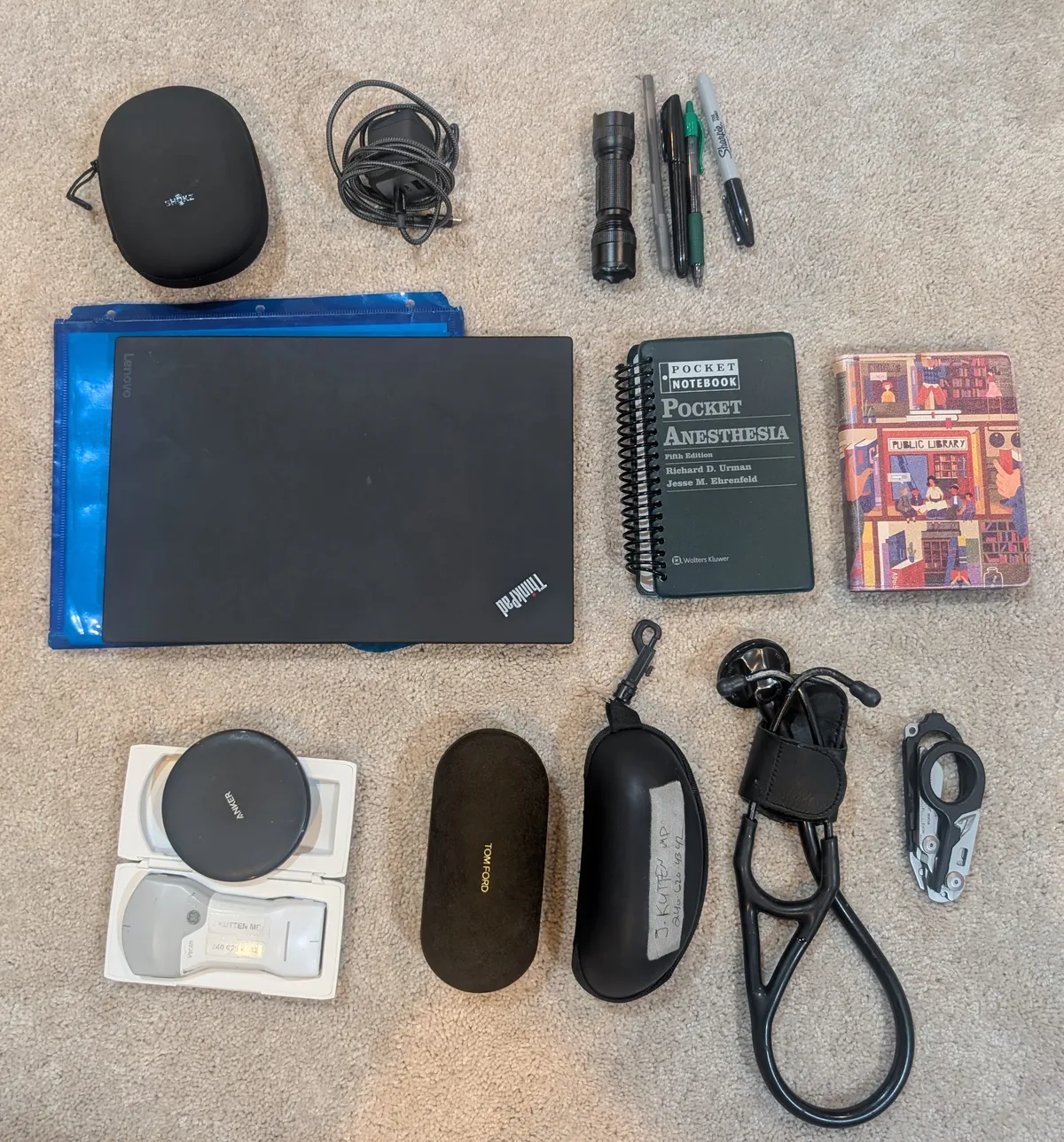- 10 Nov, 2025 *

I’ve wanted to do an EDC (“every day carry”) post for some time, so imagine my delight at the latest bearblog carnival game, hosted by Absurd Pirate – “what’s in my inventory?”
Not pictured: Keys, slimline wallet, Android phone. I have a Pixel 9 Pro, which I really like. The camera is great, but IMHO the most underrated feature is the thermometer, as I need to document a temperature anytime I drop off a patient.
A backpack, which I really like. This brand makes “tacti-cool” and concealed-carry gear (definitely not my vibe!) but this bag is spacious and dura…
- 10 Nov, 2025 *

I’ve wanted to do an EDC (“every day carry”) post for some time, so imagine my delight at the latest bearblog carnival game, hosted by Absurd Pirate – “what’s in my inventory?”
Not pictured: Keys, slimline wallet, Android phone. I have a Pixel 9 Pro, which I really like. The camera is great, but IMHO the most underrated feature is the thermometer, as I need to document a temperature anytime I drop off a patient.
A backpack, which I really like. This brand makes “tacti-cool” and concealed-carry gear (definitely not my vibe!) but this bag is spacious and durable.
Inside my backpack I have:
Laptop. I’ve been a ThinkPad user since college, and this X1 Carbon is probably due for an upgrade.
Kindle. I debated for years whether or not to buy a Kindle (figuring that I didn’t need another screen in my life). But I must admit that eInk is easy on the eyes. This is good for reading at the end of each day.
Flashlight
A video laryngoscope. Sometimes I work in places where a video laryngoscope isn’t readily available; this can get me out of various difficult airway situations. I usually have an ETT and stylet somewhere as well.
A pocket ultrasound and its case and charger. This is a GE VScan Air CL, designed to image both deep and superficial structures. I’ve used it for tough IVs and to perform quick cardiac exams (even though the curvilinear probe isn’t perfect for that!) Theoretically I could use it for nerve blocks as well. If I were to purchase it again, I would get the SL version which is better optimized for cardiac imaging.
USB-C wall adapter and cable. This is an Anker Nano 65W. I like it because I can use it to charge any USB-C device - phone, laptop, kindle, or headphones.
Leatherman RAPTOR. This is a multi tool - a pair of folding trauma shears designed for EMS. Sometimes in the OR you just need a pair of scissors. This one has my name on it.
Littman Master Cardiology. I prefer this to the Littman Cardiology III which I was a required purchase in medical school. The shape of the Master Cardiology is a little easier to hold, and I found that I never used the bell on the III. Littman advertising material used to claim that the Master Cardiology has superior sound quality, but I honestly can’t tell the difference between the two models. It’s true what they say: the most important part of the stethoscope is between the earpieces.
Not pictured: IV start kit and flushes. You never know when you’ll need one.
Shokz OpenRun Headphones and case. These are bone-conductive headphones which are great for working out. The sound quality is “good enough” for most applications but I admit a true audiophile wouldn’t tolerate them. These are the USB-C version.
Lead shielded glasses. Eyes are particularly sensitive to X-ray radiation. I spend many days in the OR, with a lot of exposure. Hopefully these will prevent me from developing cataracts in the future. Plus, they are made for my prescription so in a pinch I can use them as backup glasses.
Backup glasses, just in case.
Pocket Anesthesia 5th Edition. My favorite pocket reference book.
Many, many pens.
A folder to carry loose leaf documents.
Not pictured: Various medications, for myself. I get dry skin so I keep some lotion as well.